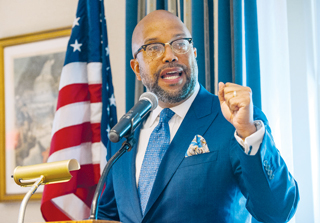ORLANDO, FL—Skilled nursing providers that follow protocol and correctly report possible incidents of abuse and neglect should be given a “gold seal and not a red hand,” according to the American Health Care Association’s head of government relations.

“It ought to be a green light. It ought to be, ‘Go to this facility because their systems work,’” said Clif Porter II, AHCA senior vice president of government relations.
Porter discussed the Centers for Medicare & Medicaid Services’ plans to place a consumer alert icon next to facilities cited for abuse, neglect or exploitation during the AHCA/National Center for Assisted Living Annual Convention and Expo on Tuesday.
The icon feature will go into effect on the Nursing Home Compare website starting Oct. 23. It features open-palm displayed in a red circle.
AHCA has called on CMS to change the icon, which could also limit Five-Star Rating scores.
“[A] Red hand [icon] is dumb. Red hand says don’t go there. Red hand is punitive. Red hand is not about transparency. Red hand is about piling on a consequence in a backdoor kind of way,” Porter said.
“It’s insulting to me. I’m sure more insulting to you that you would have a rule that would essentially say, ‘Every month we’re going to check to find out who got cited for abuse and then we’re going to put this flag up to warn people, even though the definition of abuse is as wide as this room,” he added.
In a later session, CMS official Evan Shulman said regulators would be further consulting stakeholders leading up to the Oct. 23 implementation date. He defended the symbol’s use, telling a skeptical overflow crowd it is “not a stop sign,” and that the consumer-facing website would instruct visitors to ask questions about the labeled facilities, not bypass or ignore them.
One questioner said their local prosecutor’s office worried that because the icon conveys a stop sign it would actually deter abuse reporting, bringing unintended consequences amid broader legal fears.
AHCA will be in constant communication with CMS before the icon is implemented, Porter said. He said it should be similar to a caution symbol and clearly encourage facilities to look further into reported incidents.
The organization hopes the agency will shift its stance to something more universally recognized as a warning message, and that it will become amenable to removing the symbol once facilities fix the issue, not at the end of some subsequent data updating cycle.
Porter said swapping in a new symbol would “go a long way in sort of resolving some of our issues and concerns.”





